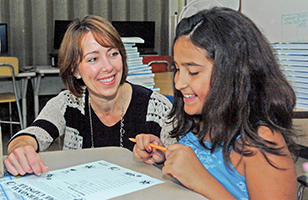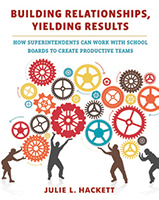The High Price of Superintendent Turnover
October 01, 2015

Perhaps most troubling is that when school reformers depart unexpectedly on their terms, the school community is left to pick up the pieces, and students and staff suffer.
Involuntary transfers are problematic for school communities — and especially for superintendents, leaving them no choice about whether they remain in the school district. A state takeover may be the reason for the involuntary transfer, but a poor superintendent-school board relationship is a far more common explanation for an abrupt ending to a superintendent’s tenure. In fact, Jason Grissolm and Stephanie Andersen, co-authors of “Why Superintendents Turn Over” (American Educational Research Journal, 2012), say that approximately 60 percent of all superintendent turnover is involuntary, and friction between a superintendent and the school community or school board is often the source. So what gives?
School reformers crank out turnaround plans with ease, but they struggle to find ways to include the community in their reform efforts. The superintendent’s inability to build solid relationships with the community and her or his board comes with disturbing consequences.
I recently facilitated a strategic planning session for a school district in the Northeast. The school district is now on its fourth superintendent in five years. The school board is deeply concerned that this discontinuity in leadership is affecting the district’s ability to gain momentum on much-needed educational improvements. They are certainly not alone in this regard.
High superintendent turnover is an issue that plagues entire states, not just individual school systems. California recently experienced staggering superintendent turnover rates with 71 percent of superintendents in the largest districts and 45 percent of those in the smallest districts leaving their jobs between 2006 and 2009, according to a 2012 survey by Susan Frey, a writer for EdSource Today. Santiago Wood, who worked as a superintendent in three California districts over eight years, characterized the dilemma this way: “Superintendents are hired to be fired.”
Indeed, a disparaging news media and a cynical public with little use for public schools appear to perpetuate the illusion that superintendents are destined to be short-timers. Is there anything we can do to change this?

Creating Synergy
If we want to stem the tide against high superintendent turnover, we need public school reformers who will govern effectively by adopting relational mindsets. Superintendents and school boards must be able to work together to balance relationship building and results, creating a synergy between and among all stakeholders in the system.
Effective leaders need to stay focused on the kinds of school transformations that will improve the life outcomes for all students. In so doing, they must approach these reforms with genuine empathy, respect and compassion for the school community. Superintendents who are relationship-building reformers possess an unwavering belief that educational reform need not be at the expense of relationships. It is quite possible to have both.
So what does relationship-building reform look like in practice? I have spent nearly 2½ decades in education. Now in my eighth year as the leader of an 8,200-student urban school system in Massachusetts, I have learned the value of building productive teams and enlisting them in school reform efforts. And we believe our students are better for it.
Short-Term Struggle
A few years ago, I faced one of the toughest leadership challenges of my career. Working closely with the school board, we developed a plan to integrate more than 650 students in 8th grade from four middle schools into one high school. The plan included school closures, consolidations and redistricting to address budgetary shortfalls and issues of equity.
A school consolidation of this nature was the first of its kind for our tight-knit school community, and initially the residents and town fathers were furious. Name-calling and gavel-banging were frequent occurrences at public meetings. The consolidation would make Taunton High School the fifth largest high school in the state with close to 2,500 students. What leader in her right mind would even consider putting that many middle school students together with high school students?
But then we did what we now do so well in Taunton. We worked together, all of us, to problem solve and make the consolidation as painless as possible. We created community input teams and included students, teachers, administrators, school board members and citizens to address community concerns, no matter how great or small. We worked together to dispel harmful rumors, and we invited the public to several forums where we faced our most vocal opponents.
We listened — even when the feedback was hard to hear — and we demonstrated care, concern and flexibility by modifying our plans when it made sense. We talked about the financial benefits of the consolidation and explained it would help us address issues of equity for our students by providing greater access to the arts, athletics, science labs and world languages. We were honest about the challenges we faced, clear about how we intended to address those challenges and open to finding better ways to do so. In the end, the community got behind the school reform effort, and our students flourished.
After five years, community members now wonder what all the fuss was about in the first place!
Credit and Blame
The key to substantive leadership is sustainability, which can be measured by the degree to which the school leader’s changes live on after he or she is gone. A superintendent’s efforts to engage the school system in bold educational reforms may be noteworthy, but they are not necessarily praiseworthy unless those reforms have a lasting impact.
Taunton’s school reform effort might have gone another way had I kept the school board and school community at arm’s length like some school reformers. Our school community was involved and invested, so we were successful. We all had some skin in the game and that is important. What’s more, I still have the privilege of leading the same urban school system several years later, our students are excelling, and it looks like the changes we made together are here to stay.
But not everyone agrees that superintendent turnover matters to student outcomes. The Brookings Institution, in a 2014 study “School Superintendents: Vital or Irrelevant?” contended “superintendent turnover has little or no meaningful impact on student achievement, and certainly is not associated with improvements in student test scores.” An association with which any superintendent should take umbrage.
School leaders can’t take credit for singlehandedly improving student outcomes, any more than they can blame themselves for poor test scores. But we can, should and do create the conditions to help coalesce school communities and transform school systems. The Iowa Lighthouse Study, launched in 2001, demonstrated this very concept by showing how the characteristics and behaviors of superintendents and school boards — in essence, their relationships — affected student outcomes. (See related story by Harry Heiligenthal.)
Teamwork is at the heart of school systems with effective governance structures, and superintendents undeniably have a role in creating conditions that matter for students. If there is any doubt, just ask the communities still reeling from school reforms that never lasted.
Lasting Change
Superintendents across the country are being tossed from their jobs, and we need to start asking ourselves why. People aren’t crazy about change and politics are here to stay, so we need to find better ways to do this work.
Successful school reform is a shared endeavor, and relationship-building school reformers can work with school boards and school communities to make powerful, sustainable changes that improve the life outcomes of all our children. In the end, the best school reformers will heed this sound advice from British anthropologist Jane Goodall: “Lasting change is a series of compromises. And compromise is all right, as long as your values don’t change.”
About the Author
the superintendent in Taunton, Mass., and author of Building Relationships, Yielding Results: How Superintendents Can Work with School Boards to Create Productive Teams (Harvard Education Press, 2015). E-mail: jhackett@tauntonschools.org. Twitter: @tpssuper
Advertisement
Advertisement
Advertisement
Advertisement


.png?sfvrsn=3d584f2d_3)
